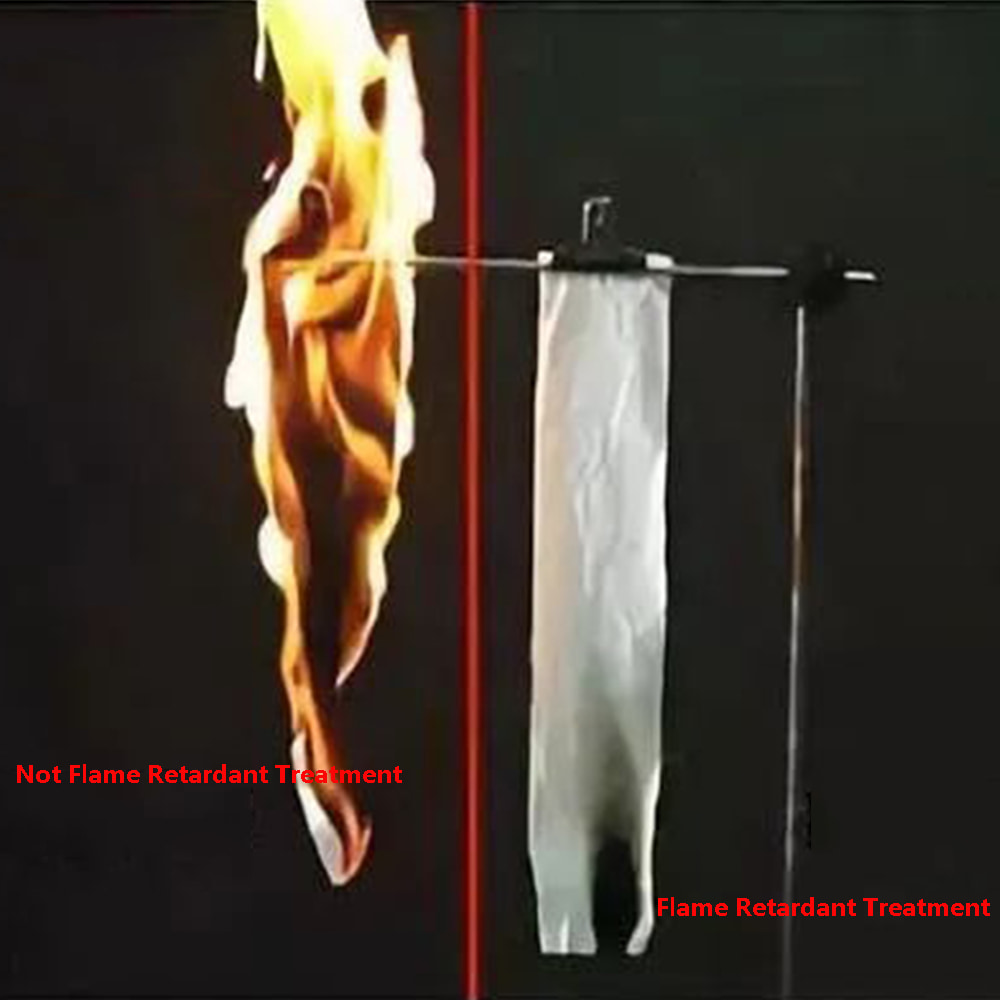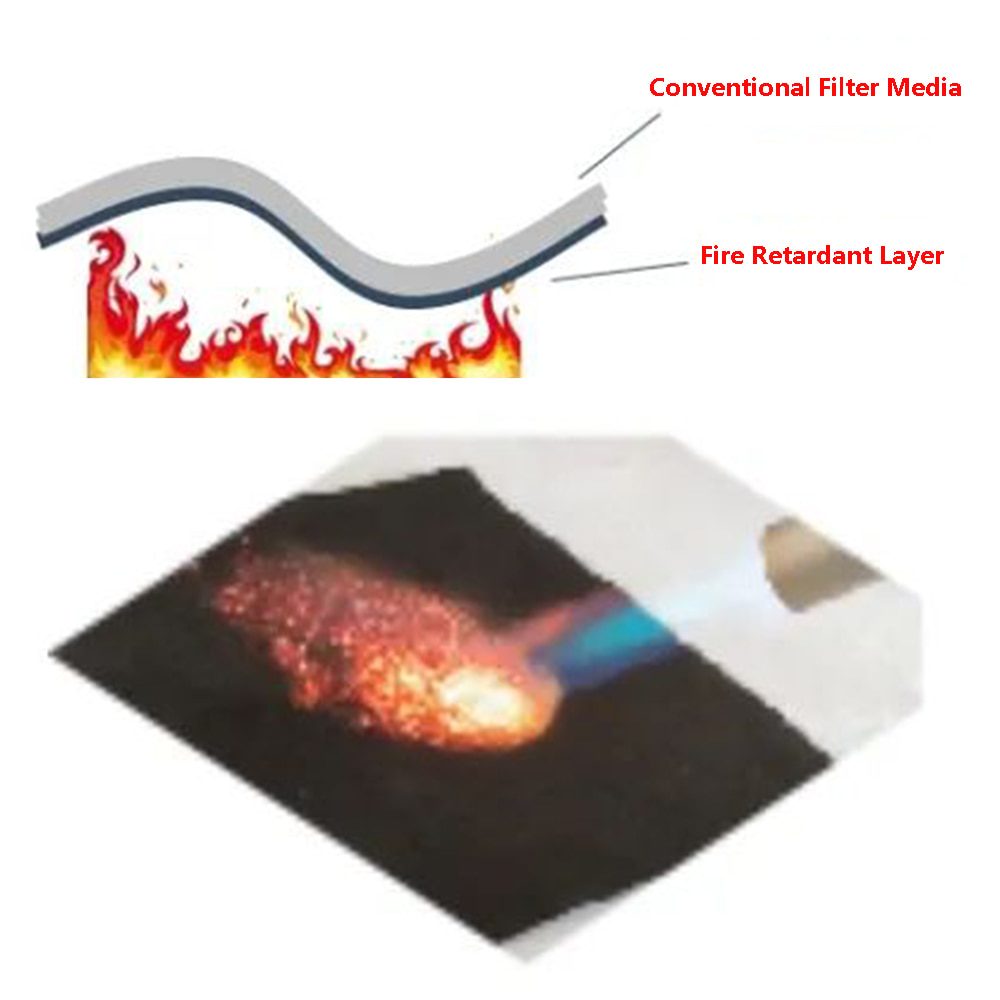Do you know the magic of flame retardant filter materials?
Apr 26, 2022With the rapid increase in the consumption of various civil and industrial textiles, especially the demand for textiles such as various interior decorations, the fire caused by textiles is also increasing. In the 1960s, Japan, Europe and the United States and other countries put forward requirements for the flame retardant finishing of textiles, and formulated flame retardant standards for various textiles.

According to the International Organization for Standardization, flame retardancy (or flame resistance) refers to the property of a material to slow, stop or prevent flaming combustion. It can be an inherent characteristic of the material, or it can be imparted to the material through a certain treatment. The flame retardant technology of textiles is an applied research based on the latter theory.
Modern combustion mechanism research shows that fabric combustion is a closed chain reaction process, and the purpose of sun burning is to break the chain reaction, that is: in the exothermic stage, the flame retardant is a strong absorbent; in the thermal cracking stage, the resistance The flame retardant acts as a catalyst to change the thermal degradation mode of the fiber, so that it reacts in the direction of reducing the flammable gas and increasing the solid; Free radical passivation to achieve the purpose of flame retardant.
At present, flame retardant fabrics are generally post-treated with flame retardants for fabrics:
1. Padding baking method
Padding baking method is the most widely used flame retardant finishing process, and its process flow is padding-pre-baking-baking-water washing-post-treatment.
2, exhaustion method
The exhaustion method is also known as the exhaustion method. This process is to immerse the fabric in a flame retardant liquid for a certain period of time, and then dry and bake it. It is generally used for hydrophobic synthetic fiber fabrics, and the flame retardant and fibers are required to have affinity.
3. Coating method
The coating method is a finishing method in which the flame retardant is mixed into the crosslinking agent or the adhesive to fix it on the fabric.
4. Organic solvent method
The organic solvent method can directly use water-insoluble flame retardants.
5. Spray method
There are two kinds of spraying methods: manual spraying and mechanical continuous spraying. For some fabrics with fluffy patterns, tufts or piles on the surface, the continuous spraying method can generally be used.
As a kind of textile, the filter bag is a kind of textile. During the actual operation of the filter bag, when the flue gas temperature is too high, or there are sparks, the filter bag will be burned and damaged, which will affect the filtration efficiency. For the flame retardant of the filter bag, Yuanchen Technology The R&D department has also been working on the flame retardant research of filter bags. Combining technologies such as graft copolymerization, sol-gel and supercritical drying, Xingyuan Fire retardant filter material has been developed, which can adapt to the requirements of different flame retardant occasions and avoid Damaged filter bag due to sparks.

Xingyuan·Fireproof series filter material can directly resist flame burning. It adopts layer-by-layer self-assembly and in-situ sol-gel technology to cover the surface of the filter material with an intumescent fireproof layer, thereby forming a physical fire barrier, isolating The external flame erodes into the filter media. In order to further improve the fireproof performance, nanoparticles containing fluorine and silicon can be infiltrated into the fireproof layer. The limiting oxygen index of Xingyuan·Fireproof series filter material is higher than 35, and the flame retardant grade is Class A.
Yuanchen Technology's flame-retardant-fire-retardant technology can be applied to different types of fibers. Xingyuan·Fire-retardant and flame-retardant series filter materials can effectively deal with various working conditions that generate sparks and sparks, escort the safe and stable operation of dust collectors, and solve problems for customers. Pain points are often more valuable.